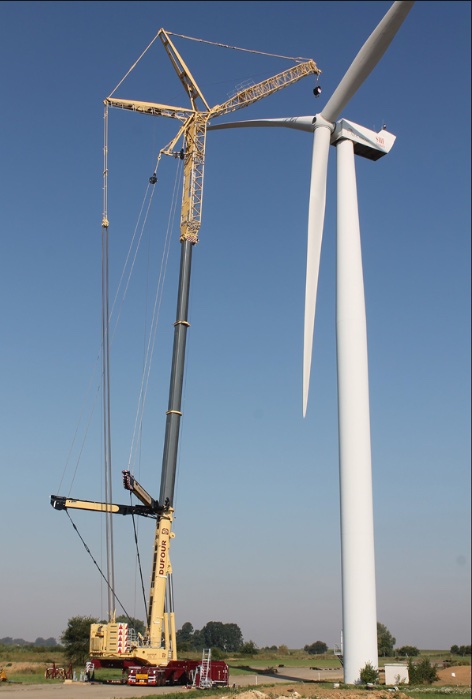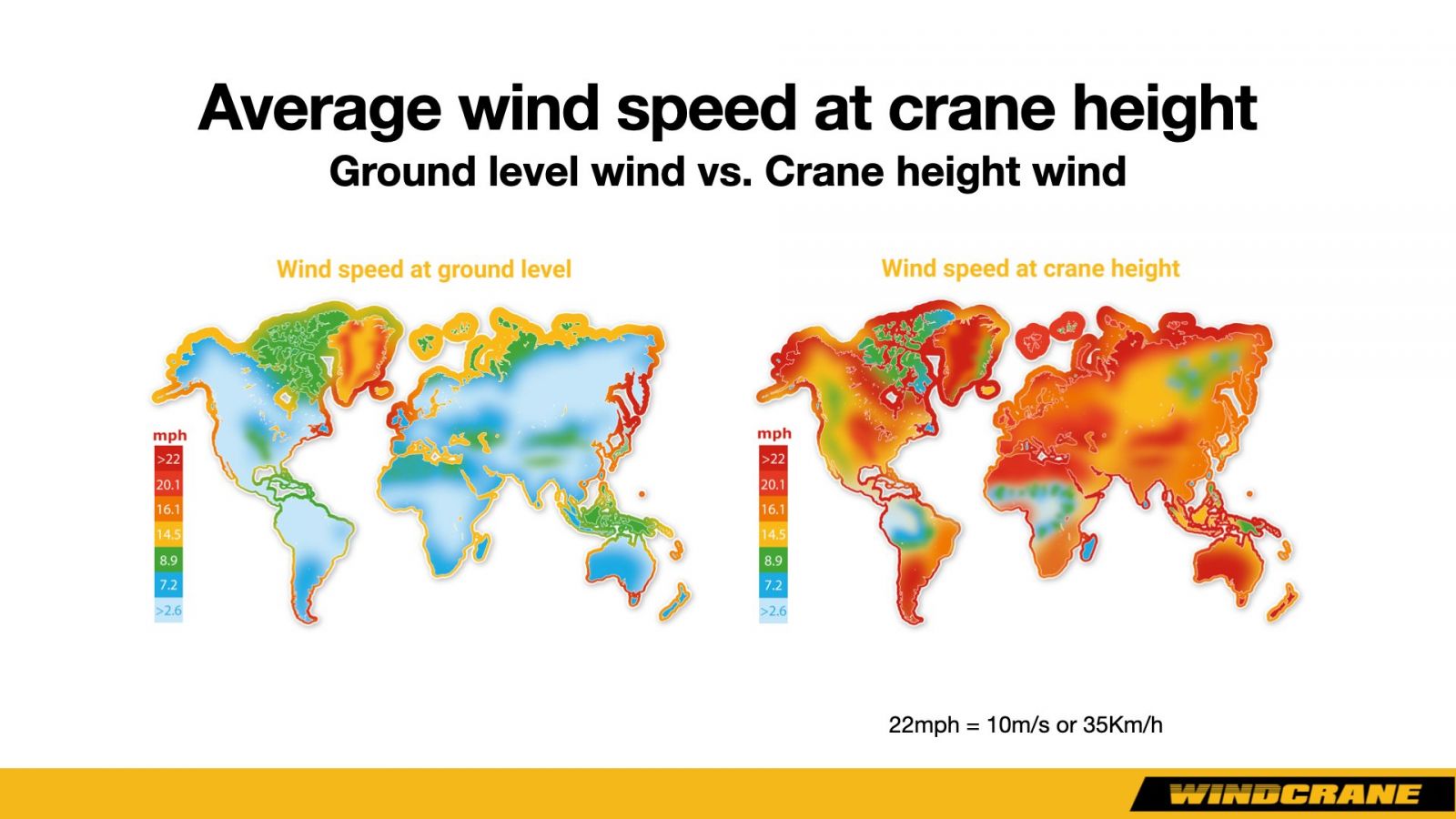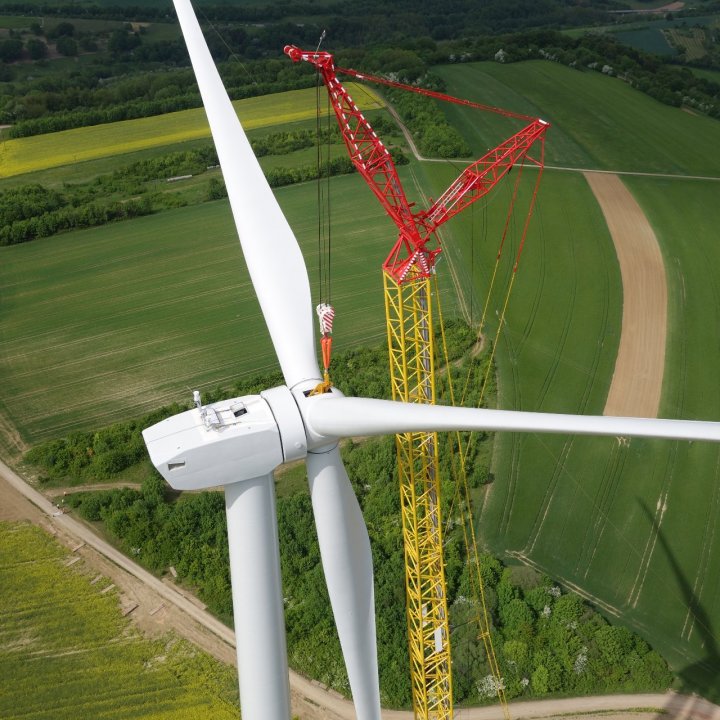Bankable Wind Data for the Construction Industry
 Wind sensors have a critical role in the wind energy industry: they collect data that is used to estimate electricity production, which then calculates revenue during the project lifetime. The same principle can be applied for safety purposes in the construction industry, especially in projects that involve tower cranes. Historic wind data can be analyzed to schedule lifts and other weather sensitive tasks more efficiently. At the same time, live measurements can be used for short-term decisions, complementing historic data.
Wind sensors have a critical role in the wind energy industry: they collect data that is used to estimate electricity production, which then calculates revenue during the project lifetime. The same principle can be applied for safety purposes in the construction industry, especially in projects that involve tower cranes. Historic wind data can be analyzed to schedule lifts and other weather sensitive tasks more efficiently. At the same time, live measurements can be used for short-term decisions, complementing historic data.
The wind energy industry has driven innovation in sensor technology, but there is a technical challenge when using this technology in construction applications. Most sensors that are currently in the market focus on lower wind speeds such as 3-7 m/s, which are typical in meteorology applications and wind energy projects. On the other hand, tower cranes and high-rise constructions are often exposed to wind speeds of over 30 mph (>13.4 m/s).
Project developers in the wind power industry use measured data to estimate generation in terms of probability figures like P75 and P90.
- P75: Generation level that will be exceeded by the wind turbine 75 percent of the time.
- P90: Generation level that will be exceeded 90 percent of the time.
Development banks and other financial institutions are very interested in these figures when financing a wind farm, since it describes the project’s loan payment capacity. A similar principle can be applied in the construction industry: wind data is not associated with a revenue stream like in wind turbines, but it can help construction firms avoid major costs. If a crane rental company knows the times of the year when high winds are more likely at each site, this information can be provided to contractors for more effective scheduling.
What Is the Cost of Wind in the Construction Industry?
According to a two-year study across 148 construction sites in the UK, a typical €200-million project can suffer the following impacts as a consequence of adverse weather:
- An average direct cost of €250.000 (about $275,000 U.S.) per day. This includes labor, leased equipment, and penalties for missed deadlines.
- This figure does not account for indirect costs such as health & safety, contract disputes, loss of profit, loss of reputation, etc.
Crane operators and construction managers know they can proceed safely when wind speeds are below 30 mph (13.4 m/s), and that they must stop at speeds over 35 mph (15.6 m/s). In the 30 - 35 mph range, however, deciding between continuing or suspending construction activities leads to many disputes and disagreements.

In the study, wind speeds below 30 mph were measured 58 percent of the time, and wind speeds above 35 mph were measured 15 percent of the time. However, wind speeds within the uncertainty range of 30-35 mph were measured 27 percent of the time. For a typical construction project, this means project managers can expect many days where the decision to pause lifting is not clear.
In the wind power industry, it’s now possible to forecast how the wind will behave during the next 10-15 years, and analyze the financial performance of a project based on this data. When the same concept is applied in the construction industry, contractors and crane rental companies can know what site conditions to expect during the next few years. The weather is unpredictable in terms of specific dates and hours, but predictable in terms of general patterns and profiles.
Using Wind Data Effectively in Tower Crane Operation
Having accurate wind data is important, but construction firms cannot ignore the role of human interpretation. Contractors need to ensure that crane operators, project managers and other staff members are provided with exactly the same data. Otherwise, they may reach different conclusions based on measurements from different sources. An anemometer installed 10 m from the ground will give very different results than a crane-mounted weather station at 130 m.
 Crane operators and project managers must also be aware that the average wind speed does not tell the entire story: turbulence intensity is also critical. A tower crane subject to constant 25 mph winds will not experience the same forces as another crane under changing winds with an average speed of 25 mph. Safer decisions are possible when average wind speed data is complemented with turbulence intensity.
Crane operators and project managers must also be aware that the average wind speed does not tell the entire story: turbulence intensity is also critical. A tower crane subject to constant 25 mph winds will not experience the same forces as another crane under changing winds with an average speed of 25 mph. Safer decisions are possible when average wind speed data is complemented with turbulence intensity.
Based on lessons learned from the wind power industry, the following general recommendations can be made for wind measurements in construction projects:
- Use previous measurements as a reference for data correction.
- Use data from surrounding projects, ideally those with similar conditions: similar crane height, season of the year, etc.
- Keep a wind database for the last 5-10 years, to be used for regressive forecasting.
Crane rental companies can help their customers by providing centralized wind data, which can then be used for site-specific forecasts. The value provided by this data for construction firms can be compared with probability figures like P75 and P90 in the wind energy industry. In other words, crane rental companies are not only renting their equipment with this approach, but also their accumulated weather data and expertise.
- The combination of historic and live wind data can be used to justify delays caused by unfavorable weather, helping contractors avoid hefty fines for missed deadlines.
- Construction firms can also be provided with crane-specific wind forecasts, instead of relying on general forecasts that may not reflect the exact site conditions.
- Project managers can rely on this data to schedule critical activities like lifts and concrete pours more effectively.
With a centralized wind database, crane rental companies can estimate the potential number of winded off days for a project, based on its location and schedule. This information can be used to identify the best months for lifting, when the potential impact of high winds is the lowest.
Real Life Example: Winded Off Days in February and March, 2019 and 2021
Weather monitoring services allow crane rental companies to access centralized data for their entire crane fleet. They can create a site profile with historic wind measurements from nearby tower cranes having at least one year of data. This data can be standardized for different crane heights and seasons, and combined with 5-10 years of historical measurements from wind databases.
The following chart shows the number of winded off days in 2019 and 2020, between the months of January and August:
.jpg)
This chart shows an example of the typical differences that can be expected from year to year: 2019 had 3 winded off days in February and 9 in March, which was reversed in 2020, with 10 winded off days in February and 3 in March. A detailed analysis of the measured data revealed that winded off days tend to happen by late February and early March. Forecasting exact dates is not possible, but contractors know they can expect frequent high winds at this time of the year. If a critical lift is scheduled at this time, project delays are very likely.
As more construction companies use centralized wind data, the size of the database increases and more accurate forecasts are possible. Crane manufacturers and rental companies who keep an organized database of historic wind speeds can provide added value to their customers. However, this data must be highly detailed to be useful in future projects, complemented with information such as project location, measurement height, and time of the year. Of course, customer privacy is also an important consideration when using centralized weather data. Historic wind measurements should belong to the customer, and used anonymously when forecasting weather conditions for other projects.
Eduardo Estelles is Managing Director at WINDCRANE. WINDCRANE has been developed by Logic Energy, a company with over a decade experience delivering weather and energy monitoring systems for businesses. Logic Energy is based in Scotland, one of the windiest places in the world. The origins of the company go back to the Wind Energy industry where we supplied systems to collect wind data over a few years before a wind farm was created.
WINDCRANE | www.windcrane.com
Author: Eduardo Estelles
Volume: 2022 May/June









